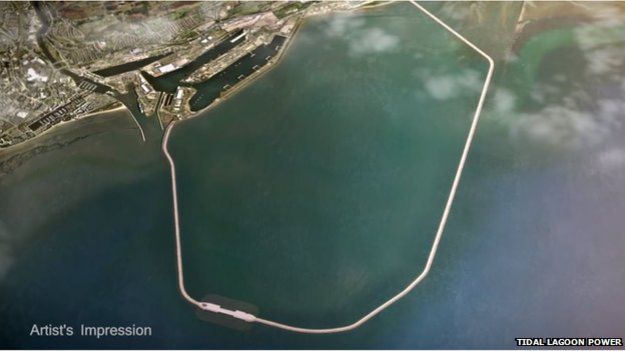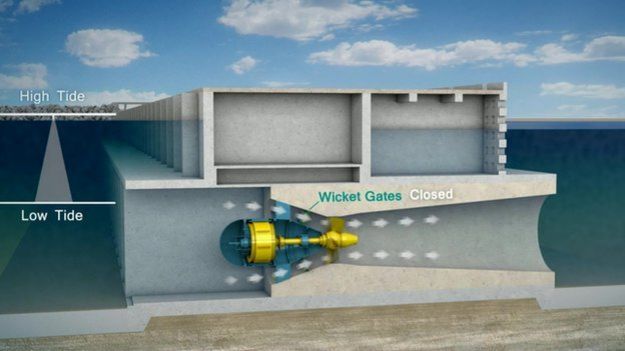WA Project switched on...
http://www.abc.net.au/btn/story/s4186859.htm
Wave Energy
- Rorschach
- Posts: 14801
- Joined: Wed Jun 06, 2012 5:25 pm
Wave Energy
You do not have the required permissions to view the files attached to this post.
DOLT - A person who is stupid and entirely tedious at the same time, like bwian. Oblivious to their own mental incapacity. On IGNORE - Warrior, mellie, Nom De Plume, FLEKTARD
-
mellie
- Posts: 12049
- Joined: Mon Feb 28, 2011 7:52 pm
Re: Wave Energy
http://www.carnegiewave.com/projects/perth-project.html
There are more viable sources of energy to invest in Roach.
This is so 2013.
Fancy a windmill?
Or a pair of high top Nike Airs?
~A climate change denier is what an idiot calls a realist~https://g.co/kgs/6F5wtU
- Super Nova
- Posts: 11793
- Joined: Sat Dec 15, 2007 12:49 am
- Location: Overseas
Re: Wave Energy
Wave energy is interesting but I really like the tidal energy capture process they propose for the UK.
Really simple.
Plans to generate electricity from the world's first series of tidal lagoons have been unveiled in the UK.
The six lagoons - four in Wales and one each in Somerset and Cumbria - will capture incoming and outgoing tides behind giant sea walls, and use the weight of the water to power turbines.
A £1bn Swansea scheme, said to be able to produce energy for 155,000 homes, is already in the planning system.

How does lagoon power work?
The seas around Britain are tidal: this means the water levels rise and fall every day, sometimes by several metres in height.
A turbine is a way of generating electricity from a turning fan.
When wind, or water, rushes through the fan blades, it turns the turbine and generates power.
This means a huge amount of water comes and goes, roughly twice a day.
These special lagoons will use the power of the sea tides by controlling when the water flows back and forth.
When the tide starts to rise, gates in the sea wall around the lagoon are closed and water builds up outside the wall.
When the tide is at its highest, the gates are opened and the water rushes through turbines in the wall.

As the turbines turn around, electricity is generated, and as the water passes through, the lagoon fills up as well.
Then it happens the other way around: as the tide falls outside the wall, the level of the lagoon stays high. At low tide, the gates open again letting the water out of the lagoon, generating more electricity.
It's thought the turbines would generate power in this way for an average of 14 hours each day.
Video here: http://www.bbc.co.uk/news/science-environment-31689511
Source for images: http://www.bbc.co.uk/newsround/31695254
Really simple.
Plans to generate electricity from the world's first series of tidal lagoons have been unveiled in the UK.
The six lagoons - four in Wales and one each in Somerset and Cumbria - will capture incoming and outgoing tides behind giant sea walls, and use the weight of the water to power turbines.
A £1bn Swansea scheme, said to be able to produce energy for 155,000 homes, is already in the planning system.

How does lagoon power work?
The seas around Britain are tidal: this means the water levels rise and fall every day, sometimes by several metres in height.
A turbine is a way of generating electricity from a turning fan.
When wind, or water, rushes through the fan blades, it turns the turbine and generates power.
This means a huge amount of water comes and goes, roughly twice a day.
These special lagoons will use the power of the sea tides by controlling when the water flows back and forth.
When the tide starts to rise, gates in the sea wall around the lagoon are closed and water builds up outside the wall.
When the tide is at its highest, the gates are opened and the water rushes through turbines in the wall.

As the turbines turn around, electricity is generated, and as the water passes through, the lagoon fills up as well.
Then it happens the other way around: as the tide falls outside the wall, the level of the lagoon stays high. At low tide, the gates open again letting the water out of the lagoon, generating more electricity.
It's thought the turbines would generate power in this way for an average of 14 hours each day.
Video here: http://www.bbc.co.uk/news/science-environment-31689511
Source for images: http://www.bbc.co.uk/newsround/31695254
Always remember what you post, send or do on the internet is not private and you are responsible.
Who is online
Users browsing this forum: No registered users and 4 guests